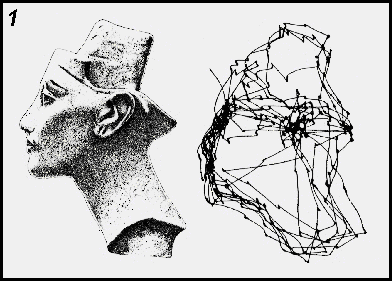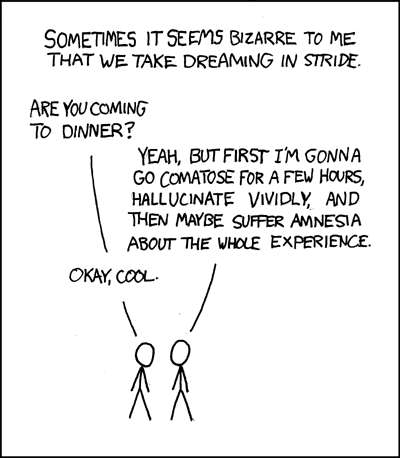Despite being one of the more annoying animals, woodpeckers are actually pretty cool when you consider how well they're designed for what they do. Their feet have two toes in front and two in back to better grip vertical surfaces. Their stiff tails act like a third leg to balance themselves against the tree (or building) that they're pecking. But what's really cool is their skull.
If you were to sit down and try to design a helmet, you might not think of looking towards nature for inspiration. But while pecking, a woodpecker's head accelerates and decelerates at very high speeds. In order to protect itself from injury due to impact, it has evolved several structural mechanisms to absorb the shock of repeatedly ramming its face into a tree.
Some of these structures include a very sharp and stout beak, which minimizes the impact of the beak hitting the tree, much like jumping into water feet-first minimizes the impact of the surface tension on the rest of the body. The stoutness then helps to absorb most of the shock and prevent it from reaching the cranium of the skull. There is also less space between the brain and the skull than in other animals, which helps to keep the brain from getting jostled around during impact. Woodpeckers also have a long hyoid bone, which is attached to the tongue, forks and extends around the neck, up behind the skull, over the top, and into the right nostril, acting as a sling to cradle the skull.
 |
| Yes, really. On the left is the skull of a woodpecker, where the hyoid can be seen extending up from behind the skull. On the right labeled (b) is the woodpecker hyoid bone by itself. |
In a recent article in PLoS ONE, researcher Yubo Fan and co. decided to look more closely at the engineering of the woodpecker skull. By comparing the structure of a woodpecker to the soil-pecking Eurasian hoopoe using a high-speed videos, force and torque sensors, and micro-CT scanning, they were able to determine how the internal structure of the skull and beak interplay to absorb shock and prevent brain injury in woodpeckers.
First is the composition of the skull itself. Bones are not entirely solid throughout, they are mostly composed of porous "spongey" bone, with a solid outside. In the skull of a woodpecker, the spongey bone is made of a dense, plate-like organization, which acts like packing peanuts. In contrast, the hoopoe has spongey bone that looks more like rods, which is less effective in absorbing shock.
The internal structure of the beak is also specially designed to absorb shock, with a longer outer tissue layer and a very tough internal bone. In fact, the beak absorbs most of the shock during impact, as shown by this diagram demonstrating the distribution of force (shown in red) throughout the skull over the time of impact and recoil.
Finally, there's the distribution of force on the hyoid bone. Its unique structure allows it to absorb any extra force from the impact on the beak and divert it away from the skull itself. It also helps to keep the skull in place, like a seatbelt keeps a person in place during a car crash.
The woodpecker is turning out to be another inspiration from nature to engineers. When trying to create a better helmet, why not look to the solutions that millions of years of evolution has produced?
Images courtesy of PLoS ONE.
Reference: Wang, L.; Tak-Man Cheung, J.; Pu, F.; Li, D.; Zhang, M.; Fan, Y. (2011). Why Do Woodpeckers Resist Head Impact Injury: A Biomechanical Investigation. PLoS ONE. http://www.plosone.org/article/info%3Adoi%2F10.1371%2Fjournal.pone.0026490












